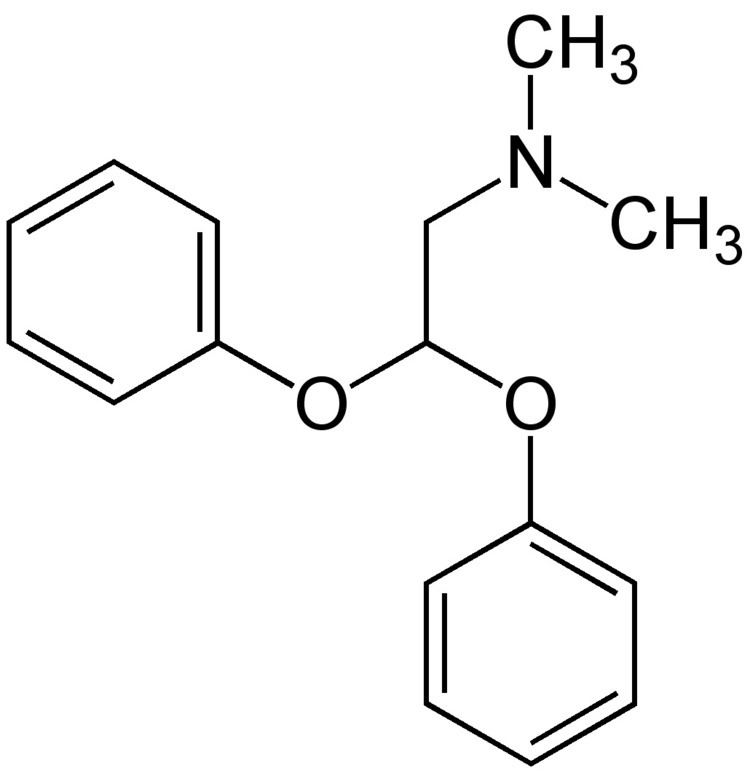Routes ofadministration Oral CAS Number 32359-34-5 Molar mass 257.328 g/mol | ATC code N06AX13 (WHO) PubChem CID 36109 Bioavailability 21% | |
 | ||
Legal status In general: ℞ (Prescription only) Biological half-life 2.8 ± 1.04 hours (acute);4.0 hours (chronic) | ||
Medifoxamine (INN) (brand names Clédial, Gerdaxyl) or medifoxamine fumarate, also known as N,N-dimethyl-2,2-diphenoxyethylamine, is an atypical antidepressant with additional anxiolytic properties acting via dopaminergic and serotonergic mechanisms that was formerly marketed in France and Spain, as well as Morocco. The drug was first introduced in France sometime around 1990. It was withdrawn from the market in 1999 (Morocco) and 2000 (France) following incidences of hepatotoxicity.
Contents
Pharmacology
Medifoxamine has been found to act preferentially as a relatively weak dopamine reuptake inhibitor, but also as an even weaker serotonin reuptake inhibitor (IC50 = 1500 nM) and as a weak antagonist of the 5-HT2A and 5-HT2C receptors (IC50 = 950 and 980, respectively; notably greater affinity relative to amitriptyline and imipramine). It is known to produce two active metabolites during first-pass metabolism in the liver, CRE-10086 (N-methyl-2,2-diphenoxyethylamine) and CRE-10357 (N,N-dimethyl-2-hydroxyphenoxy-2-phenoxyethylamine). The IC50 values of CRE-10086 for serotonin transporter, 5-HT2A, and 5-HT2C binding are 450 nM, 330 nM, and 700 nM, respectively, while those of CRE-10357 are 660 nM, 1600 nM, and 6300 nM. Medifoxamine and its metabolites lack affinity for other serotonin receptors including 5-HT1A, 5-HT1B, 5-HT1D, and 5-HT3 (>10000 nM). As medifoxamine is metabolized extensively in the liver during first-pass metabolism, and as these metabolites have as much as 3-fold greater activity relative to medifoxamine, it is likely that they contribute significantly to the pharmacology of the parent drug.
Efficacy and tolerability
Unlike many tricyclic antidepressants, medifoxamine lacks anticholinergic and alpha blocker properties (very low affinity for the muscarinic acetylcholine receptors and 10-fold lower affinity for the α1-adrenergic receptor relative to 5-HT2 binding sites), and is also apparently inactive as a norepinephrine reuptake inhibitor (although the same source stating this also states that it is inactive as a serotonin reuptake inhibitor, which was subsequently found not to be the case). Studies in mice revealed that the drug does not possess any sedative or locomotor stimulant effects. In accordance with all of the preceding, medifoxamine was found to be well-tolerated at dosages of 100–300 mg per day in clinical trials. Double-blind controlled clinical studies have found it to have similar effectiveness to imipramine, clomipramine, and maprotiline in the treatment of depression.
